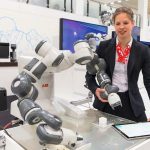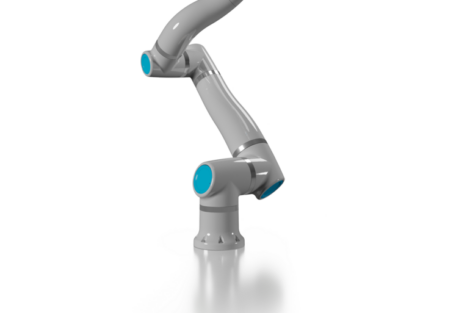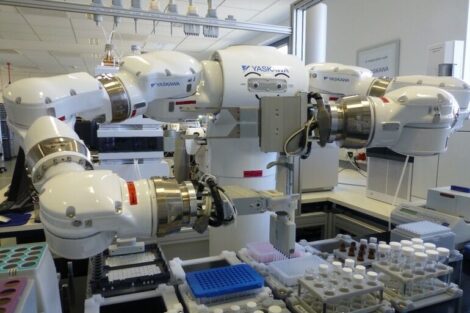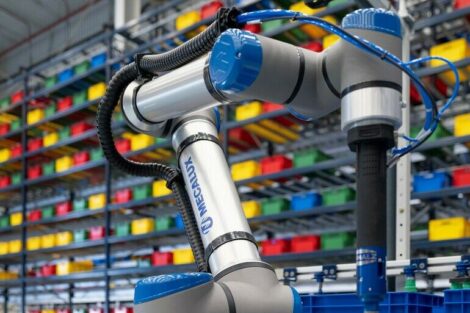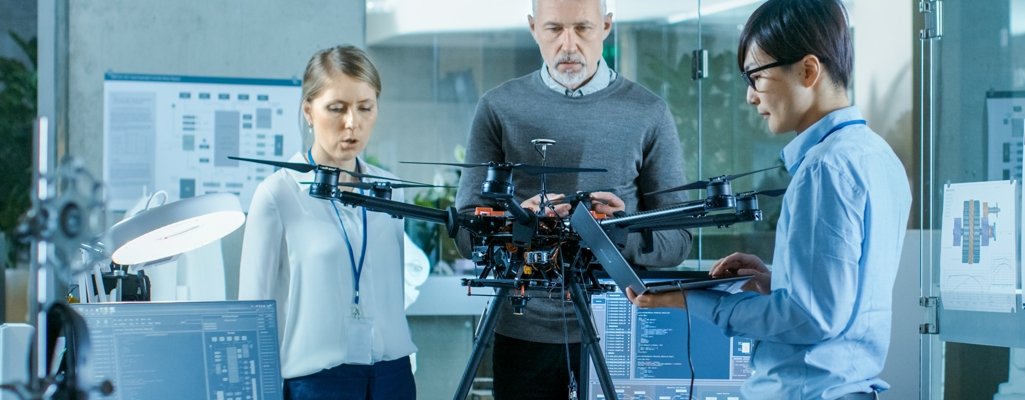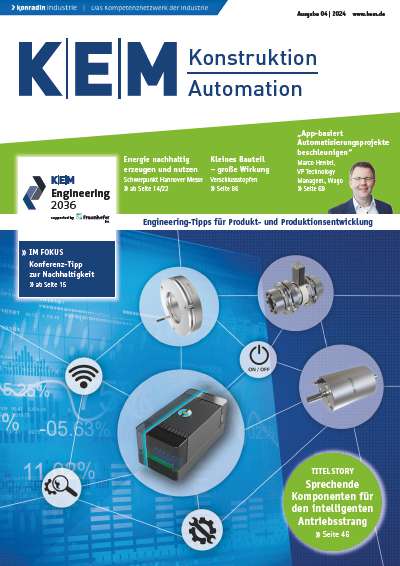KEM Konstruktion: Mr. Atiya, you have dealt with the topic of artificial intelligence ever since your university studies. Is it fitting to have this topic at the very top of the agenda today?
Dr. Sami Atiya: I was already very fascinated by it back then because it opens up new possibilities. For ABB, which is at home in control engineering and automation technology, this offers tremendous opportunities, especially in conjunction with robotics. Technically speaking, I’d call it machine learning instead of artificial intelligence. What’s interesting is that we were already working on probabilistic approaches to fuzzy logic systems during my studies, with the aim to identify patterns in a data set. These approaches were correct, but the British professor for informatics Geoffrey Hinton made significant progress in connection with neural networks only five years ago. Among other things, this led to approaches such as deep learning, opening up many possibilities for use of the technology. I also find it intriguing that a neural network is ultimately an approximation of a function – with two variants: Either you take the supervised learning approach the same way children learn and give tips on what is right or wrong, or you allow for interpretation. Based on the analysis of a large number of pictures of cats, it is possible not only to describe one cat, but the image of a ‘new’ cat also can be recognized. Translated to the field of robotics, this means: The robot is trained or it ‘learns’ independently how a problem can be solved. Both of these topics are very much in focus and, without question, are highly interesting for robotics.
KEM Konstruktion: What difficulties must still be overcome in the application of such machine learning approaches?
Atiya: The first issue is the robustness of the systems. Take ‘bin picking,’ for example: If it works for 30 different objects but not the 31st, then the system is not suitable for industrial use. It should work flawlessly for at least 10,000 objects. Ultimately, that’s the difference between university, where you want to show that an approach works, and industry, where you need to deliver reliable machines and equipment that work in real-world applications. In other words, we will need to continue tuning the neural networks so that processes can be performed repeatedly without error and to ensure that they are robust enough for industrial use. And if you add the requirement that a system must be able to solve different tasks, then it becomes clear that this is still going to take a while. However, all structurally predefined applications – such as repetitive tasks in laser welding – are already reliable and suitable for industrial use. We have been able to achieve maximum precision for a while now; take multiple robots working in parallel in the automotive industry, for instance. Research is required however, especially for applications in unstructured environments – and this is exactly where artificial intelligence can help. In this sense, a 3D camera system that can ‘look’ at objects and decide which one to grab could be called a precursor. There are already examples of this today and their numbers will grow.
KEM Konstruktion: Can you share an interesting example of this?
Atiya: Thanks to the acquisition of the Spanish company NUB3D in February 2017 we can inspect 3D surfaces online using optical sensors. This works together with a robot in the line in seconds and shows the way towards flexible manufacturing. One of the main objectives here is to optimize production processes using data analysis. In addition to surface data, the NUB3D technology also captures geometric data with a great level of detail and allows for comparison with its “digital twin”. The automated inspection of the manufactured parts made possible by this reduces cycle times, increases quality and reduces the risk of error in quality control. Bundling robotics and software also plays an important role for advances in digitalization, especially when it comes to the expansion of our ABB Ability platform as a key pillar of our Next Level Strategy. ABB Ability uses the intelligent cloud to generate useful digital data for a wide range of customers.
KEM Konstruktion: Ongoing production processes can generally also be optimized in this way…
Atiya: …painting is an example. In the future we will be able to offer a system here that already analyzes the quality during spraying by means of integrated sensor technology. This is a good example of pattern recognition in the context of machine learning: I compare data from the process with that of downstream quality control, which enables me to recognize which process workflow is effective. This ensures optimal operation of the spray gun at all times. Even more important: The optimization in the ongoing process makes it possible to directly eliminate errors, so I don’t have to do any rework because I discovered a quality defect too late.
KEM Konstruktion: Does this mean that the system approach will continue to gain importance at ABB as a robot manufacturer?
Atiya: Exactly. Controlling the robot has already been solved – now the focus is increasingly on finding the best solution for the task at hand. Of course, we still sell individual robots, but the application expertise surrounding the robot was always our specialty. However, a crucial question will be which agreements can be made regarding data access and use. But the answer already lies in the task: If we can offer added value in terms of productivity, then the customer will be willing to provide data. Collaboration will be another key driver, once again with the goal of increasing the productivity of our customers. It was interesting for us that we received around 1,000 inquiries from industrial customers – 500 from companies that previously never had anything to do with robots – about YuMi, which we presented in 2015. The possibility of having an industrial robot work safely and precisely next to a human has unleashed many creative ideas. One reason for this is that you don’t need to fence in the robot, which saves space and also offers retrofit advantages. But not all of today’s robots will be replaced by a collaborative robot. There will still be activities that require a high dynamic range with larger loads – and inherently that’s a safety issue, of course. We believe that both worlds will coexist in production. Our system and application knowledge will play a crucial role in both solutions.
KEM Konstruktion: In general, how important is digitalization for ABB and how do you define it?
Atiya: For us, digitalization is the capability to equip systems with sensors and make the data acquired in this way available in the cloud or on the edge – with the aim to generate knowledge from this. In combination with machine learning – ultimately just another term for analytics – there are so many ways to optimize production processes and to increase the degree of autonomy. That’s our philosophy – and that’s why we have set up our ABB Ability platform together with Microsoft. ABB Ability offers a standard system for simple, professional access to data that also takes into account cyber security and the ability to program applications quickly and easily. As a robot manufacturer, there is another important aspect of digitalization: Many conventional production cells are too rigid and inflexible as soon as the lot size ‘one’ comes into play. We hear about this problem time and again when we talk to our customers. Many of these problems can be solved with a robot – this means that robots are also gaining importance with digitalization. Sooner or later robot systems, especially self-learning, intelligent systems, could become the backbone of the smart factory.
KEM Konstruktion: Let’s take a look at drive technology. Can ABB Ability become more important in the area of energy consumption than the question as to whether I should use an IE4 motor?
Atiya: Both play a role together. We are obviously working towards higher energy efficiency classes in our motor development, but there is also great potential in improving operating conditions. Our ABB Ability Smart Sensor is an intelligent sensor technology for condition monitoring that can be retrofitted and which turns low-voltage motors into smart, connected machines. This makes it possible to move operating and performance data to the cloud where it can be merged with weather data, for example. Again, what is important here is that the user receives valuable information very quickly on the condition and performance of the motors. We expect that it is possible through predictive maintenance to cut downtime by up to 70 percent based on the sensor data while also extending motor life and lowering energy consumption. There is potential for improving energy efficiency in the range of between 20 to 30 percent. But surely the higher productivity will be the most important thing for the user. For instance, we recently helped a customer whose drives showed excessive levels of consumption. After analyzing the measured data we determined that the design of the drive axle mounting was faulty, which led to strong vibrations and thus increased energy consumption. This is good example of the potential of simple data analysis.
KEM Konstruktion: All these concepts ultimately lead to the cloud again – is this offer really so universal?
Atiya: Yes. ABB Ability enables our users to take advantage of the Internet of Things. This means new digital services make it possible to upgrade existing technologies, thereby increasing productivity through less downtime, higher efficiency and better yields. These are based on our extensive pool of operating data that we have built up over decades and our experience in more than 20 industries. This is the reason we made digital technology part of our DNA very early on and have been equipping devices and systems with software and interfaces that ensure smooth operation for over 40 years. Software and digital components are now key elements and make up 55 percent of the products sold. This is reason enough for us to enter into a strategic partnership with Microsoft, which gives our customers access to one of the largest cloud infrastructures on the market.
More details about ABB Ability:
“We will need to continue tuning the neural networks so that processes can be performed repeatedly without error and to ensure that they are robust enough for industrial use.”
“ABB Ability uses the intelligent cloud to generate useful digital data for customers. The aim is to increase productivity through less downtime, higher efficiency and better yields.”
“The possibility of having an industrial robot work safely and precisely next to a human has unleashed many creative ideas. Many conventional production cells are too rigid when the lot size ‘one’ comes into play.”
info
About the company
ABB is a pioneering technology leader in electrification products, robotics and motion, industrial automation and power grids, serving customers in utilities, industry and transport & infrastructure globally. With more than 125 years of experience, ABB today is writing the future of industrial digitalization and driving the Energy and Fourth Industrial Revolutions. In the field of industrial automation in particular, the acquisition of B&R (Bernecker + Rainer Industrie-Elektronik) was also completed in July 2017. This enables ABB to offer its customers in the manufacturing and process industries the entire spectrum of technology and software solutions around measurement, control, actuation, robotics, digitalization and electrification.



